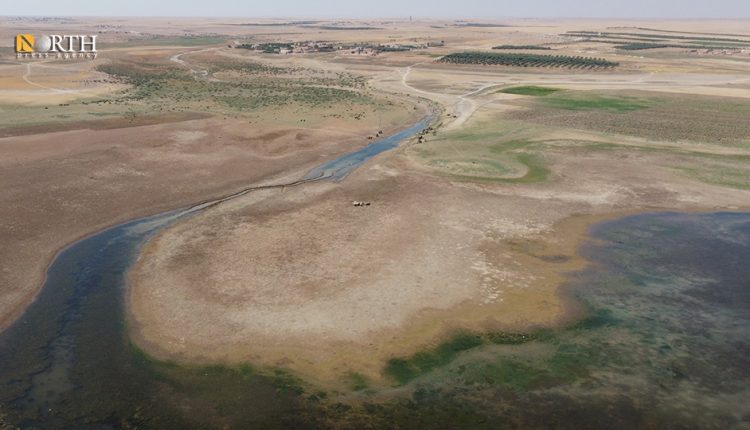Turkey’s hydropolitics lowers water flows to Syria by 40%
QAMISHLI, Syria (North Press) – Turkey’s irrigation and power projects over the last decades have contaminated the Euphrates River and decreased the volume of water flowing to Syria by an estimated 40 percent, a research institution said on Friday.
The UAE-based Trends Research and Advisory said the dam-building projects in Ankara have had a direct impact on Syria, lowering water flows to the country by an estimated 40 percent.
The institution indicated that comparing Syria’s total annual water outflow to its internal renewable water resources by 2011, the proportion was 160 percent, adding that such lowered water flow figures raise serious concerns.
Turkey has always been a disturbing neighbor to Syria as all its activities have harmed Syrian people. Between late 1990s and early 2000s, Turkey achieved the Southeastern Anatolia Project (GAP) that includes the establishment of a number of dams on the Euphrates and Tigris, cutting off water to both Syria and Iraq, a step that violates the international covenants, according to the 1987 agreement.
The 1987 agreement that was signed between Turkey, Syria and Iraq under the auspices of the United Nations (U.N.), Syria’s share of the Euphrates River is 500 cubic meters per second, but the amount of water stored behind the Euphrates Dam has decreased from 14 billion cubic meters to only 10 billion, causing the Euphrates Lake to lose 75 percent of its effective reserve.
Also, the maximum level of the Euphrates Lake is 304 meters above sea, but the level has dropped to 297,75. The lake has lost over six meters vertically, with two cm daily loss.
Instead of supplying 500 cubic meters of water per second as agreed, Turkey permitted hardly 200 cubic meters to reach Syria with the construction of the Ataturk Dam, causing a sharp drop in water levels and raising the possibility of a serious humanitarian disaster, the institution noted.

